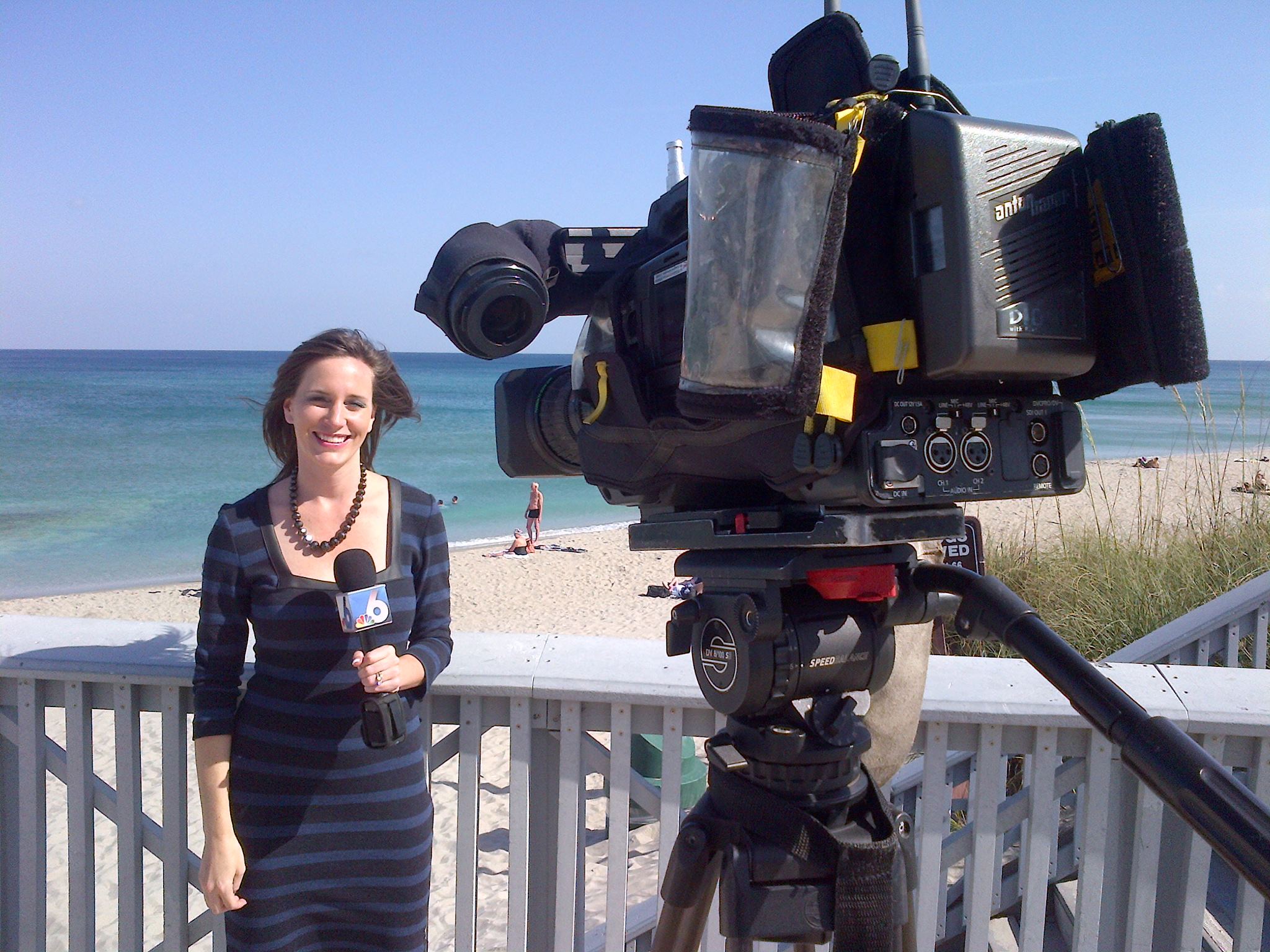If you want to become a TV reporter, you need two things. That’s it! TWO. After you earn those two things, remember, this is a very competitive industry. Those two things better be all that and a bag of chips if you want to get hired and work your way up in this business.
The most important thing, numero uno, is a great reel. This is a must. Your reel is your resume. (Check out my old montage here.)
When I was in college at Ohio State, I interned at the local ABC station a few times a week. Everyday, I went out with a reporter and photographer. This was so valuable because I got to see how the pros did it. I learned so much by asking questions, watching, and actually doing! If you can’t get an internship at a local TV station, look into creating something with resources available to you at school. For me, it was Buckeye TV. You could also reach out to someone (like me) who could help you create one.

Interviewing the Situation from the Jersey Shore… in a tanning bed
At my internship, I would shoot something with the photographer and keep it on my own tape. (Yes, in 2005, they were tapes. Now, they are SD cards.) Then, I’d take time to learn how to edit. That’s how you make a tape. After you have a tape, it’s important to get feedback from those professionals you’re working with. It’s what I did at WSYX. I received great feedback from the news director about my story telling. Then, I made another tape.
Why is this so important? News directors get hundreds of tapes for one position. It’s a competitive industry and if you don’t catch a news directors attention right away, you will lose your chance. This is why you need to put your best material first – where you look the best, sound the best, and truly stand out by being yourself. No one else can be you. Show them who you are in the first 10 seconds.

Again, in 2005 when I was applying for jobs, I’d literally make a tape a mail it. Now, I suggest creating your own website and use it as your resume. Don’t only include your video, but also your education, credentials, experience, and professional social media channels. When it comes to your reel, you can separate your montage from your packages in different clips or just put it all together in one video. Or, you can offer both. When it’s on YouTube or Vimeo, you have a lot more options to wow a news director and cater to their preferences.

Interviewing David Beckham… who touched me twice
So, a great tape is a must, but so is one other thing – knowing how to do it all. If you want to be a TV reporter, you need to know how to produce, write, shoot, edit, manage social media, and much more. I did all of these things at one point in my career, and no, it wasn’t just in the small markets. TV stations in big markets need to save money too, so they want you to do it all.
I’m not exaggerating when I tell you I was nine months pregnant, carrying around my own camera and tripod, in the South Florida summer heat, in a dangerous neighborhood, knocking on a sex offenders door to ask for an interview… by myself. Later, I would write and edit and the story in a SUV pulled over to the side of the road on my own. That’s just one example of what I did in a day. (Yeah, you don’t see that on TV.) Here’s another example of why it’s important to know how to do it all. The chief photographer at my last station (not small, top 20 market) told me I got the position over another candidate because I was better at editing video. So, learn it all – in front of the camera and behind the camera. It will be a deal breaker if you aren’t well rounded.
For more behind the scenes stories, click here.
If you want to become a TV reporter and need some help getting there, email me at Christina@mediamavenandmore.com.

